Pengcheng Zhu
Semantic-VAE: Semantic-Alignment Latent Representation for Better Speech Synthesis
Sep 26, 2025Abstract:While mel-spectrograms have been widely utilized as intermediate representations in zero-shot text-to-speech (TTS), their inherent redundancy leads to inefficiency in learning text-speech alignment. Compact VAE-based latent representations have recently emerged as a stronger alternative, but they also face a fundamental optimization dilemma: higher-dimensional latent spaces improve reconstruction quality and speaker similarity, but degrade intelligibility, while lower-dimensional spaces improve intelligibility at the expense of reconstruction fidelity. To overcome this dilemma, we propose Semantic-VAE, a novel VAE framework that utilizes semantic alignment regularization in the latent space. This design alleviates the reconstruction-generation trade-off by capturing semantic structure in high-dimensional latent representations. Extensive experiments demonstrate that Semantic-VAE significantly improves synthesis quality and training efficiency. When integrated into F5-TTS, our method achieves 2.10% WER and 0.64 speaker similarity on LibriSpeech-PC, outperforming mel-based systems (2.23%, 0.60) and vanilla acoustic VAE baselines (2.65%, 0.59). We also release the code and models to facilitate further research.
REF-VC: Robust, Expressive and Fast Zero-Shot Voice Conversion with Diffusion Transformers
Aug 07, 2025Abstract:In real-world voice conversion applications, environmental noise in source speech and user demands for expressive output pose critical challenges. Traditional ASR-based methods ensure noise robustness but suppress prosody, while SSL-based models improve expressiveness but suffer from timbre leakage and noise sensitivity. This paper proposes REF-VC, a noise-robust expressive voice conversion system. Key innovations include: (1) A random erasing strategy to mitigate the information redundancy inherent in SSL feature, enhancing noise robustness and expressiveness; (2) Implicit alignment inspired by E2TTS to suppress non-essential feature reconstruction; (3) Integration of Shortcut Models to accelerate flow matching inference, significantly reducing to 4 steps. Experimental results demonstrate that our model outperforms baselines such as Seed-VC in zero-shot scenarios on the noisy set, while also performing comparably to Seed-VC on the clean set. In addition, REF-VC can be compatible with singing voice conversion within one model.
Finite-Precision Conjugate Gradient Method for Massive MIMO Detection
Apr 14, 2025Abstract:The implementation of the conjugate gradient (CG) method for massive MIMO detection is computationally challenging, especially for a large number of users and correlated channels. In this paper, we propose a low computational complexity CG detection from a finite-precision perspective. First, we develop a finite-precision CG (FP-CG) detection to mitigate the computational bottleneck of each CG iteration and provide the attainable accuracy, convergence, and computational complexity analysis to reveal the impact of finite-precision arithmetic. A practical heuristic is presented to select suitable precisions. Then, to further reduce the number of iterations, we propose a joint finite-precision and block-Jacobi preconditioned CG (FP-BJ-CG) detection. The corresponding performance analysis is also provided. Finally, simulation results validate the theoretical insights and demonstrate the superiority of the proposed detection.
Spark-TTS: An Efficient LLM-Based Text-to-Speech Model with Single-Stream Decoupled Speech Tokens
Mar 03, 2025Abstract:Recent advancements in large language models (LLMs) have driven significant progress in zero-shot text-to-speech (TTS) synthesis. However, existing foundation models rely on multi-stage processing or complex architectures for predicting multiple codebooks, limiting efficiency and integration flexibility. To overcome these challenges, we introduce Spark-TTS, a novel system powered by BiCodec, a single-stream speech codec that decomposes speech into two complementary token types: low-bitrate semantic tokens for linguistic content and fixed-length global tokens for speaker attributes. This disentangled representation, combined with the Qwen2.5 LLM and a chain-of-thought (CoT) generation approach, enables both coarse-grained control (e.g., gender, speaking style) and fine-grained adjustments (e.g., precise pitch values, speaking rate). To facilitate research in controllable TTS, we introduce VoxBox, a meticulously curated 100,000-hour dataset with comprehensive attribute annotations. Extensive experiments demonstrate that Spark-TTS not only achieves state-of-the-art zero-shot voice cloning but also generates highly customizable voices that surpass the limitations of reference-based synthesis. Source code, pre-trained models, and audio samples are available at https://github.com/SparkAudio/Spark-TTS.
Performance Analysis of Local Partial MMSE Precoding Based User-Centric Cell-Free Massive MIMO Systems and Deployment Optimization
Oct 08, 2024



Abstract:Cell-free massive multiple-input multiple-output (MIMO) systems, leveraging tight cooperation among wireless access points, exhibit remarkable signal enhancement and interference suppression capabilities, demonstrating significant performance advantages over traditional cellular networks. This paper investigates the performance and deployment optimization of a user-centric scalable cell-free massive MIMO system with imperfect channel information over correlated Rayleigh fading channels. Based on the large-dimensional random matrix theory, this paper presents the deterministic equivalent of the ergodic sum rate for this system when applying the local partial minimum mean square error (LP-MMSE) precoding method, along with its derivative with respect to the channel correlation matrix. Furthermore, utilizing the derivative of the ergodic sum rate, this paper designs a Barzilai-Borwein based gradient descent method to improve system deployment. Simulation experiments demonstrate that under various parameter settings and large-scale antenna configurations, the deterministic equivalent of the ergodic sum rate accurately approximates the Monte Carlo ergodic sum rate of the system. Furthermore, the deployment optimization algorithm effectively enhances the ergodic sum rate of this system by optimizing the positions of access points.
M-Vec: Matryoshka Speaker Embeddings with Flexible Dimensions
Sep 24, 2024



Abstract:Fixed-dimensional speaker embeddings have become the dominant approach in speaker modeling, typically spanning hundreds to thousands of dimensions. These dimensions are hyperparameters that are not specifically picked, nor are they hierarchically ordered in terms of importance. In large-scale speaker representation databases, reducing the dimensionality of embeddings can significantly lower storage and computational costs. However, directly training low-dimensional representations often yields suboptimal performance. In this paper, we introduce the Matryoshka speaker embedding, a method that allows dynamic extraction of sub-dimensions from the embedding while maintaining performance. Our approach is validated on the VoxCeleb dataset, demonstrating that it can achieve extremely low-dimensional embeddings, such as 8 dimensions, while preserving high speaker verification performance.
MacST: Multi-Accent Speech Synthesis via Text Transliteration for Accent Conversion
Sep 14, 2024
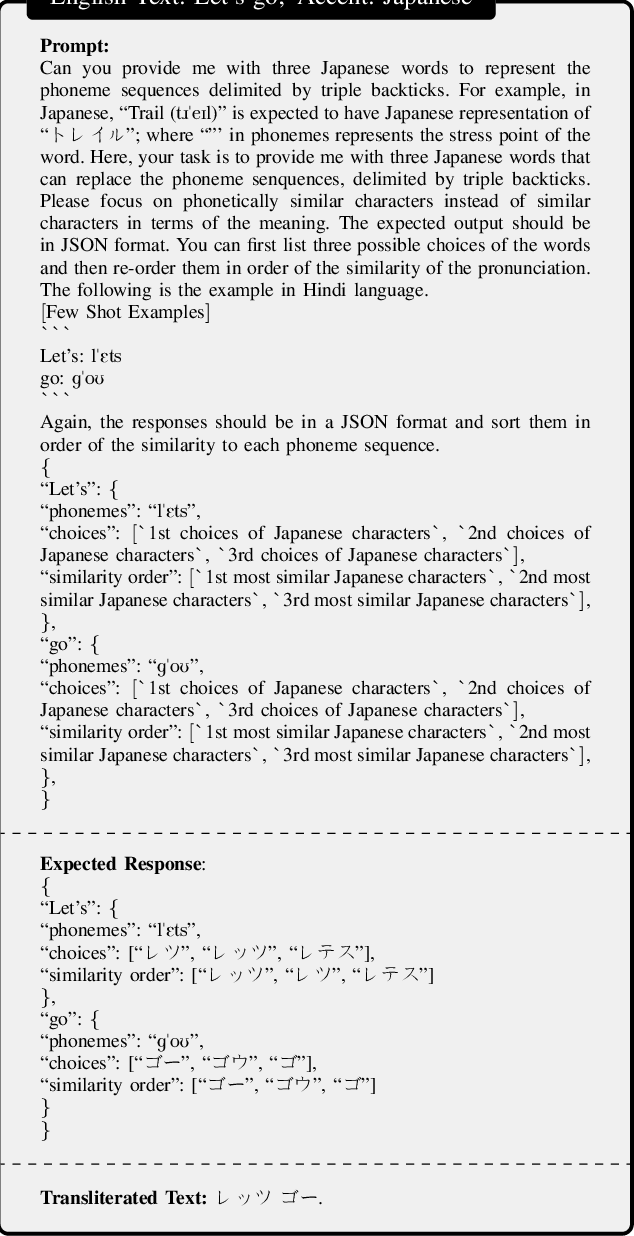


Abstract:In accented voice conversion or accent conversion, we seek to convert the accent in speech from one another while preserving speaker identity and semantic content. In this study, we formulate a novel method for creating multi-accented speech samples, thus pairs of accented speech samples by the same speaker, through text transliteration for training accent conversion systems. We begin by generating transliterated text with Large Language Models (LLMs), which is then fed into multilingual TTS models to synthesize accented English speech. As a reference system, we built a sequence-to-sequence model on the synthetic parallel corpus for accent conversion. We validated the proposed method for both native and non-native English speakers. Subjective and objective evaluations further validate our dataset's effectiveness in accent conversion studies.
E1 TTS: Simple and Fast Non-Autoregressive TTS
Sep 14, 2024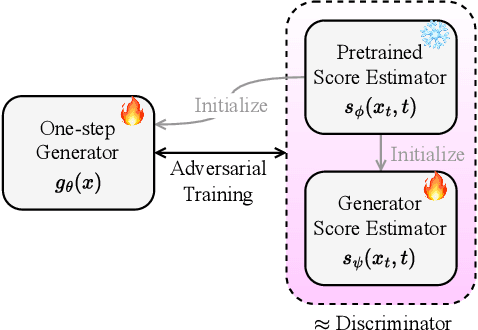

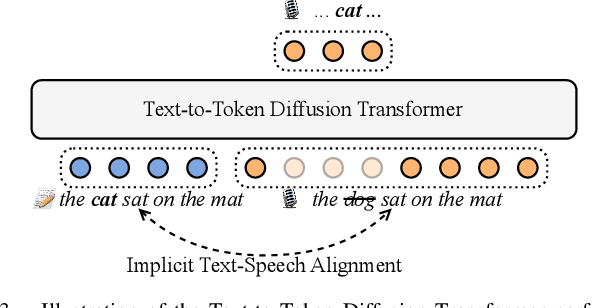
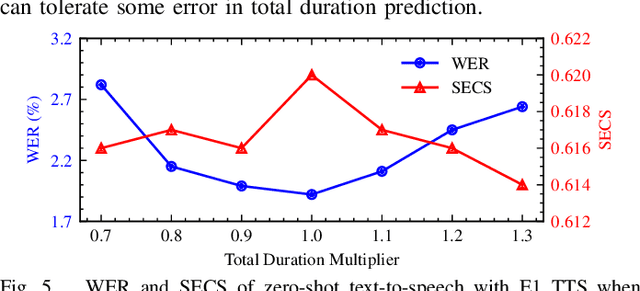
Abstract:This paper introduces Easy One-Step Text-to-Speech (E1 TTS), an efficient non-autoregressive zero-shot text-to-speech system based on denoising diffusion pretraining and distribution matching distillation. The training of E1 TTS is straightforward; it does not require explicit monotonic alignment between the text and audio pairs. The inference of E1 TTS is efficient, requiring only one neural network evaluation for each utterance. Despite its sampling efficiency, E1 TTS achieves naturalness and speaker similarity comparable to various strong baseline models. Audio samples are available at http://e1tts.github.io/ .
Mini-Slot-Assisted Short Packet URLLC:Differential or Coherent Detection?
Aug 26, 2024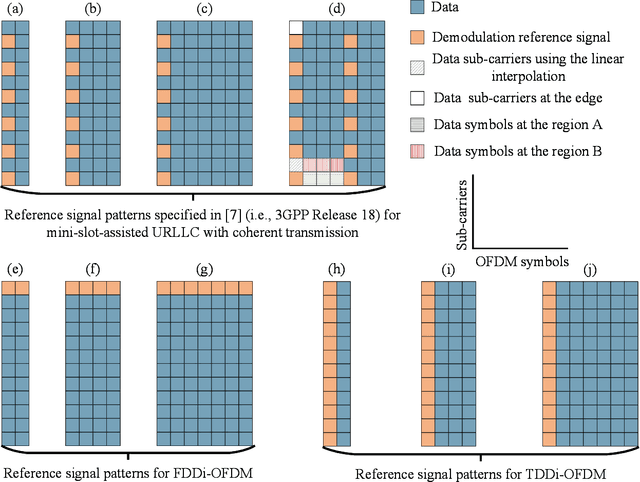
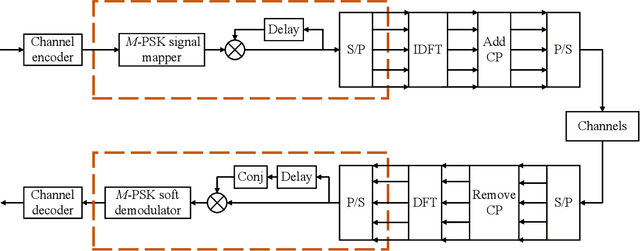
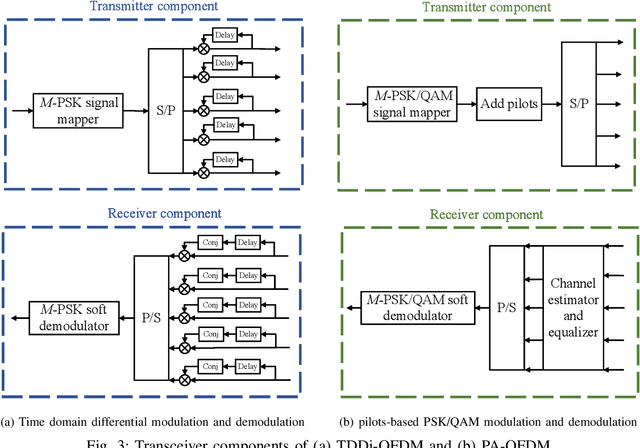

Abstract:One of the primary challenges in short packet ultra-reliable and low-latency communications (URLLC) is to achieve reliable channel estimation and data detection while minimizing the impact on latency performance. Given the small packet size in mini-slot-assisted URLLC, relying solely on pilot-based coherent detection is almost impossible to meet the seemingly contradictory requirements of high channel estimation accuracy, high reliability, low training overhead, and low latency. In this paper, we explore differential modulation both in the frequency domain and in the time domain, and propose adopting an adaptive approach that integrates both differential and coherent detection to achieve mini-slot-assisted short packet URLLC, striking a balance among training overhead, system performance, and computational complexity. Specifically, differential (especially in the frequency domain) and coherent detection schemes can be dynamically activated based on application scenarios, channel statistics, information payloads, mini-slot deployment options, and service requirements. Furthermore, we derive the block error rate (BLER) for pilot-based, frequency domain, and time domain differential OFDM using non-asymptotic information-theoretic bounds. Simulation results validate the feasibility and effectiveness of adaptive differential and coherent detection.
DualVC 3: Leveraging Language Model Generated Pseudo Context for End-to-end Low Latency Streaming Voice Conversion
Jun 12, 2024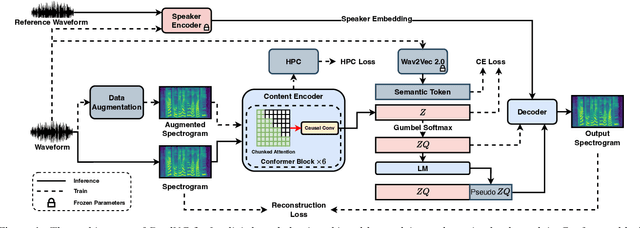
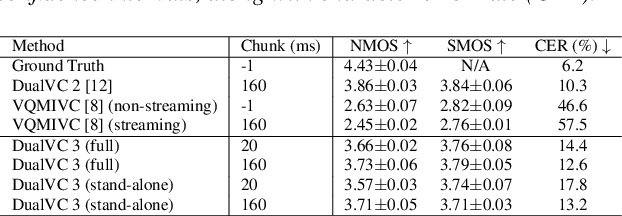
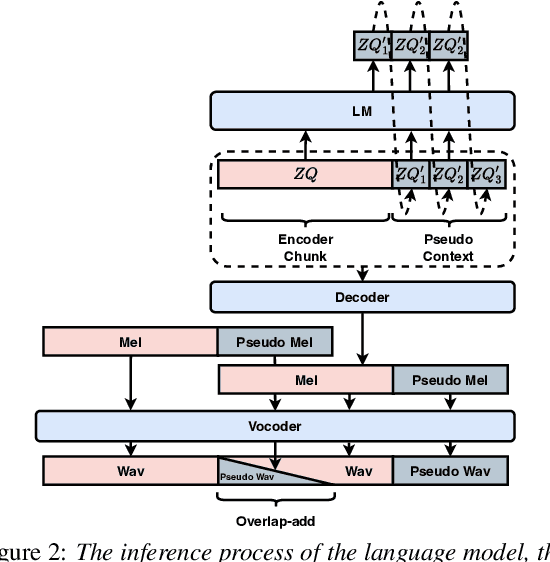
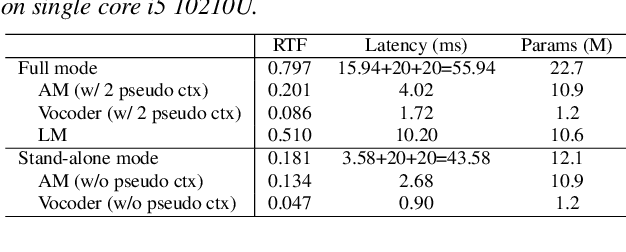
Abstract:Streaming voice conversion has become increasingly popular for its potential in real-time applications. The recently proposed DualVC 2 has achieved robust and high-quality streaming voice conversion with a latency of about 180ms. Nonetheless, the recognition-synthesis framework hinders end-to-end optimization, and the instability of automatic speech recognition (ASR) model with short chunks makes it challenging to further reduce latency. To address these issues, we propose an end-to-end model, DualVC 3. With speaker-independent semantic tokens to guide the training of the content encoder, the dependency on ASR is removed and the model can operate under extremely small chunks, with cascading errors eliminated. A language model is trained on the content encoder output to produce pseudo context by iteratively predicting future frames, providing more contextual information for the decoder to improve conversion quality. Experimental results demonstrate that DualVC 3 achieves comparable performance to DualVC 2 in subjective and objective metrics, with a latency of only 50 ms.
 Add to Chrome
Add to Chrome Add to Firefox
Add to Firefox Add to Edge
Add to Edge